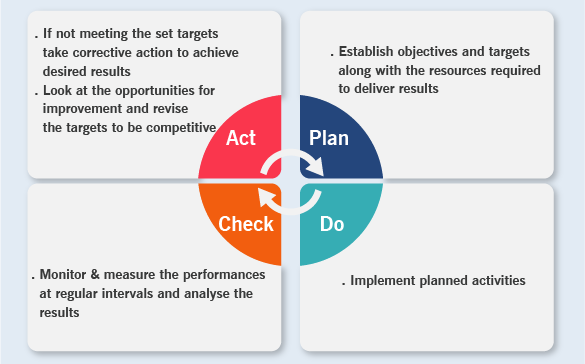Key Performance Indicators
The performance monitoring, analysis, evaluation and corrective actions/improvements are key to organization achieving its desired goals and ensure sustainable growth. The interactive quality management technique, PDCA (Plan-Do-Check-Act) cycle is applied to control and continuous improvements of processes and products performance. The PDCA cycle is briefly explained below.

The strategic elements of performance indicators can be classified as
Q - Quality - example, production quality, reliability/design quality, warranty failure rate
C - Cost - example, production cost, inventory cost, logistics cost
D - Delivery - example, end product delivery time, procurement period, inventory level
S - Service - example, time to repair
Some organizations consider Safety & Morale too - safety is related to product safety, recycling of used product etc
While every process can be measured by selecting right performance indicator, the organizations select few (about 10 to 15) Key Performance Indicators (KPIs) for management review and evaluation at regular intervals.
These KPIs are generally different for each industry and depends upon their business nature and critical success factors. The performances are bench marked with the world class industries and targets are fixed for improvement and to be competitive in the market

Every process should achieve their intended results so as to realize overarching objectives / goals.
Take the simple example of Customer Satisfaction Index (CSI) - The typical processes that influence the CSI in a manufacturing industry are -
- On-time delivery
- Product quality (on receipt)
- Warranty performance
- Service call turnaround time
CodonQMS KPI module provides the following features for effective monitoring & control -
- Creating KPI as per organizational requirement
- Department responsible
- Previous year performance
- Current year target - monthwise
- Month wise performance data
- Trend graph